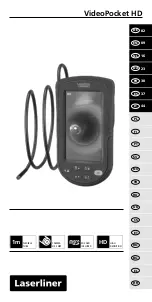
INSTRUCTION MANUAL FOR DRY SUITS
This manual was written in compliance with the provisions of
89/686/CEE directions and with the Italian rules following the
EN 14225-2:2005 rule.
INTRODUCTION
This manual describes use, care and risks related to diving dry
suits. Please read it wholly and carefully, taking care to under-
stand thoroughly all its notes before using your suit.
DESCRIPTION
The main peculiarity of a dry suit is insulating the human body
completely from the water, therefore protecting it by the cold in
order to make diving more comfortable.
The water is prevented from getting in by special joints in the
fabric and seams on the arms, legs and around the neck. It is
possible to put it on thanks to a special watertight zip fastener. In
order to balance the internal pressure increase or decrease due
to the depth, air is introduced or discharged by means of two
valves placed on the chest and on the left arm.
CONDITIONS OF USE
Cressi watertight dry suits are made by production processes
and using materials that make them highly reliable and lasting.
In order not to damage their quality and your personal safety we
recommend you though to follow determinate conditions of use.
•
Although a dry suit is produced in order to carry out dives in
low temperature water, the risk always exists of damages due
to a decrease of physiologic functions because of the cold.
Water temperatures lower than 21° C (70° F) mean cold
water. Water temperatures lower than 5° C (40° F) mean
freezing water. Diving in freezing water is highly dangerous
and requires special equipment, training and procedures.
•
We recommend not to use your dry suit in contaminated
environments or presenting high concentrations of hydrocar-
bons. The contact with petrol or oils during the usual opera-
tions carried out on board, for instance, could affect your
suit’s integrity.
•
Moreover, we recommend to use your dry suit only for the
specific use it was produced for and to avoid any use other
than thermic protection during the dive.
•
Always avoid impacts or abrasions, especially when in water.
WARNING
•
This dry suit must be worn only by individuals
who have attended a specific training course for
its use or who are accompanied by a licensed
instructor. Before wearing your dry suit in open
water, we recommend to get used to all its func-
tions in a delimitated area (swimming-pool). Use
the equipment you would use in open water.
•
Before any dive, it is always recommended for
your own safety to have carried out all the emer-
gency procedures foreseen by special training
courses. After getting your licence, it is always
recommended to practice and dive regularly.
Should you not follow this indications, you might
be led to dangerous unchecked resurfacing or
balance control losses. The consequences might
be very dangerous for your own personal safety.
•
Never exceed the maximum depth reported in
your diving licence.
•
Do not use your dry suit as a floating or rescuing
device, since it does not keep your head out of
water.
•
As a floating device on surface and for your own
safety, use a balancing self-inflating jacket. Its
function will be helping by floating: it won’t thou-
gh replace a floating or rescuing device, since it
does not keep your head out of water.
•
Dry suit and balancing jacket do not and must not
replace swimming.
•
Do not wear your dry suit with any ballast
11













































